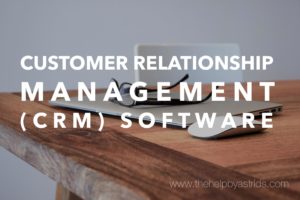 This article is a tribute to all the hardworking small business owners out there. We know how hard you hustle, we do too. We’re happy that your business has taken off and your client base is starting to grow substantially. Oh wow, here comes your first client!
This article is a tribute to all the hardworking small business owners out there. We know how hard you hustle, we do too. We’re happy that your business has taken off and your client base is starting to grow substantially. Oh wow, here comes your first client!
Clients are easy to manage when they’re a small list. But if you’re doing things right, eventually your client list will start to grow. Just like hair, it becomes unruly when not cared for properly.
We know the struggles of growing a company. That’s why we have some tech tips and tricks for you on how to manage your growing client base.
Managing your clients’ list can be a persnickety task. There are quite a few ways to go about it. You can manage your contacts list individually. These days, many sole traders and salespeople just make use of the address book on their smartphones. Others do it the old-school way of collecting business cards in cardholders or (even more old school) Rolodexes. Some make use of tech by scanning or taking a photo of the cards and storing them in EverNote or Google Keep.
These are all quick, easy, and convenient options. However, they do not go beyond simply listing names, addresses, and other pertinent contact information. You have to be able to leverage personal information into sales and marketing activities order to make your business successful. A card-box full of names just won’t hack it.
This is where Customer Relationship Management (CRM) software comes into play. More than a contact list, a CRM is kind of like a personal digital assistant for sales and marketing tool. Not only does it keep a record of your clients’ personal and professional contact information, but it also stores details of each and every interaction you have with your customer, whether by phone or by other electronic correspondence. Ideally, a CRM will also guide you through the selling process, ensuring that no opportunities are missed.
Sure, your employees can keep a document or a spreadsheet that contains all data, but they would all have to rely on memory to recall little details that make for an excellent customer service experience. These “little details” such as remembering to send a client a loyalty gift card on his/her birthday are the “little things” that make customer experience unforgettable. Sometimes, business owners also miss the opportunity to upsell or offer an upgrade because the spreadsheet method failed to note that previous conversation where you have to listen carefully for a subtle hint to learn that a current client will greatly benefit from an upgrade. That conversation could’ve gotten lost in the spreadsheet because it was a general inquiry.
With the right CRM, you can target new markets and identify new prospective clients, follow up on existing deals/projects, cross-sell, inform existing customers of new products/services, or even keep invoice trackers. You don’t have to keep juggling balls in the air and hope that none of them drop.
The key is to choose the right software for the way your business works. You don’t want to see your small team of employees trying to wrap their heads around new software instead of keeping the customers happy. They must be able to work with the software, not around it.
Next week, I will discuss the broad considerations you should decide on when choosing a CRM that would fit your Small to Medium business. In the meantime, stay humble and hustle hard.
Written by Jaie O.- The Help